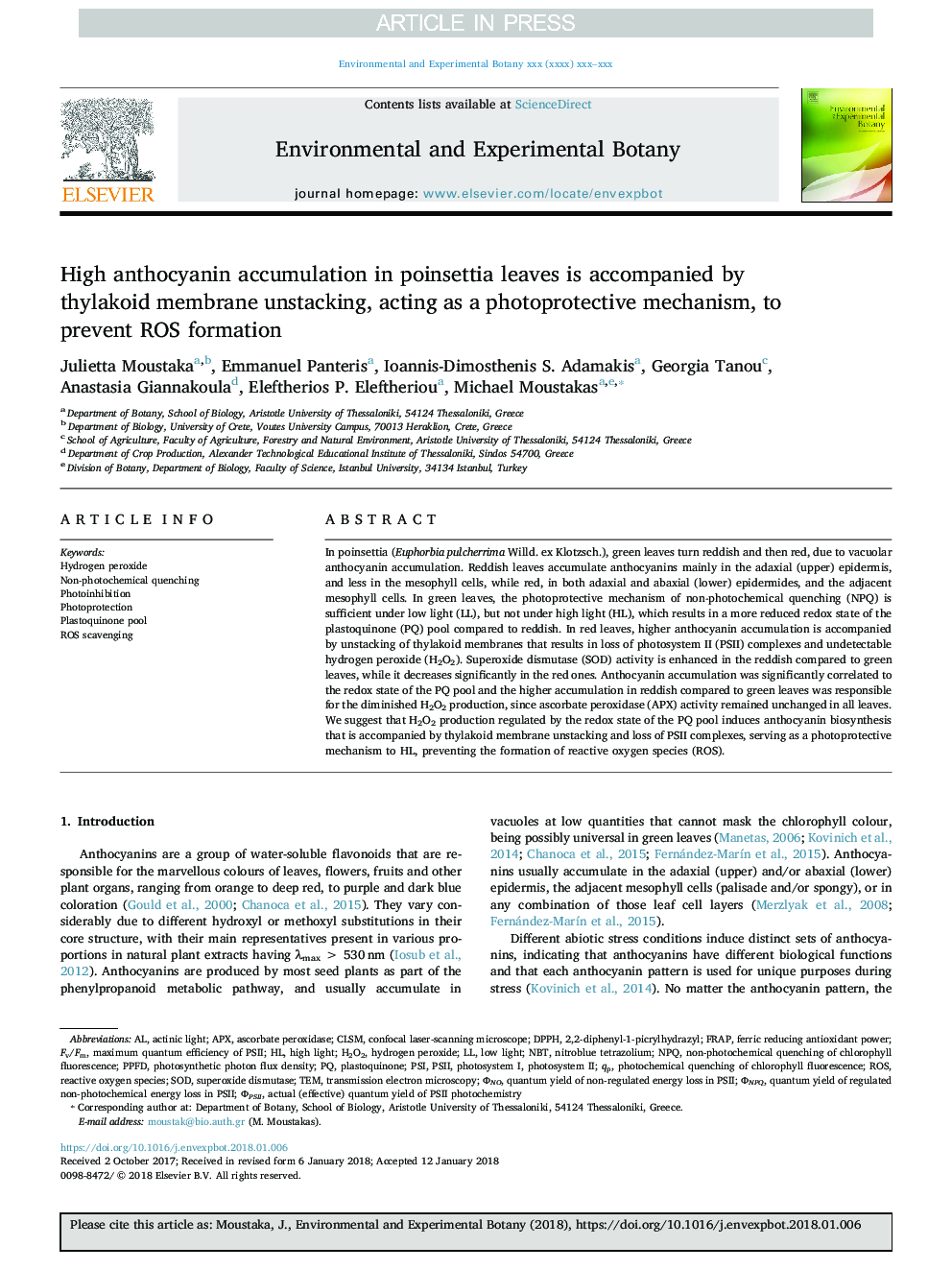| Article ID | Journal | Published Year | Pages | File Type |
|---|---|---|---|---|
| 8886824 | Environmental and Experimental Botany | 2018 | 12 Pages |
Abstract
In poinsettia (Euphorbia pulcherrima Willd. ex Klotzsch.), green leaves turn reddish and then red, due to vacuolar anthocyanin accumulation. Reddish leaves accumulate anthocyanins mainly in the adaxial (upper) epidermis, and less in the mesophyll cells, while red, in both adaxial and abaxial (lower) epidermides, and the adjacent mesophyll cells. In green leaves, the photoprotective mechanism of non-photochemical quenching (NPQ) is sufficient under low light (LL), but not under high light (HL), which results in a more reduced redox state of the plastoquinone (PQ) pool compared to reddish. In red leaves, higher anthocyanin accumulation is accompanied by unstacking of thylakoid membranes that results in loss of photosystem II (PSII) complexes and undetectable hydrogen peroxide (H2O2). Superoxide dismutase (SOD) activity is enhanced in the reddish compared to green leaves, while it decreases significantly in the red ones. Anthocyanin accumulation was significantly correlated to the redox state of the PQ pool and the higher accumulation in reddish compared to green leaves was responsible for the diminished H2O2 production, since ascorbate peroxidase (APX) activity remained unchanged in all leaves. We suggest that H2O2 production regulated by the redox state of the PQ pool induces anthocyanin biosynthesis that is accompanied by thylakoid membrane unstacking and loss of PSII complexes, serving as a photoprotective mechanism to HL, preventing the formation of reactive oxygen species (ROS).
Keywords
FRAPNPQΦPSIINBTPPFDAPXPSImaximum quantum efficiency of PSIIΦNPQDPPHCLSM2,2-diphenyl-1-picrylhydrazylFv/FmROSnitroblue tetrazoliumHydrogen peroxidePlastoquinone poolTemhigh lightNon-photochemical quenchingphotochemical quenching of chlorophyll fluorescenceROS scavengingSODSuperoxide dismutasePhotoprotectionPhotoinhibitionNon-photochemical quenching of chlorophyll fluorescencephotosynthetic photon flux densityTransmission electron microscopyConfocal laser-scanning microscopeactinic lightlow lightH2O2ascorbate peroxidaseplastoquinoneferric reducing antioxidant powerReactive oxygen species
Related Topics
Life Sciences
Agricultural and Biological Sciences
Ecology, Evolution, Behavior and Systematics
Authors
Julietta Moustaka, Emmanuel Panteris, Ioannis-Dimosthenis S. Adamakis, Georgia Tanou, Anastasia Giannakoula, Eleftherios P. Eleftheriou, Michael Moustakas,
